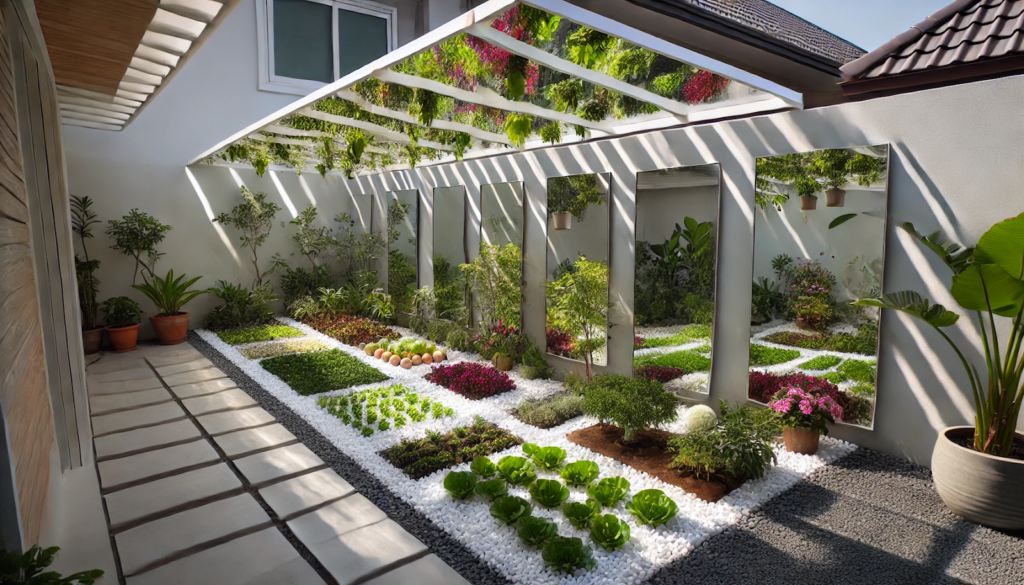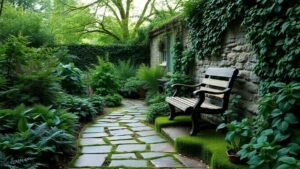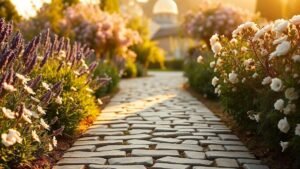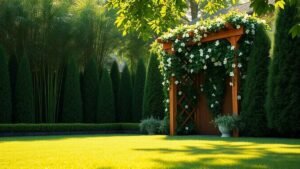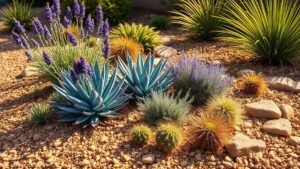If your garden suffers from limited sunlight, there’s a clever trick to brighten things up—using reflective surfaces. By bouncing sunlight into shaded areas, you can give your plants the light they need to thrive, even in dim or partially shaded spaces.
This guide will show you how to boost light levels naturally using mirrors, walls, and other common materials.
1. Why Use Reflective Surfaces?
Reflective gardening helps maximize the available sunlight by redirecting light into shadowed areas.
Benefits:
- Enhances photosynthesis in low-light gardens
- Reduces leggy, weak plant growth
- Allows for healthier crops in tight or shaded urban spaces
- Helps indoor and container plants flourish
You don’t need expensive equipment—just smart placement and simple materials.
2. Best Reflective Materials for Gardening
Not all surfaces are created equal. Use materials that reflect visible light, not just heat.
Top Options:
- White-painted walls or fences – Soft, diffuse reflection
- Aluminum foil – High reflection, great for DIY uses
- Mirrors (glass or acrylic) – Strong directional light bounce
- Reflective mulch (silver film) – Reflects light upward under plants
- Mylar sheets – Lightweight, durable, and highly reflective
- Light-colored gravel or stones – Subtle and natural-looking
Always choose materials that can withstand outdoor conditions.
3. Where to Position Reflective Surfaces
The goal is to redirect morning or afternoon sun toward shaded plant areas.
Tips:
- Place mirrors or foil sheets on walls or stakes behind shady beds
- Angle reflective panels toward low-sun zones
- Paint garden beds, pots, or trellises white to reflect extra light
- Use reflective mulch around small plants to boost lower light levels
- Install portable mirrors in raised beds or patios with shifting sun patterns
Avoid creating direct glare—soft, diffused light is ideal.
4. Boost Light Indoors with Reflective Tools
For indoor gardens and houseplants, reflective strategies can make a big difference.
Indoor Tips:
- Place mirrors opposite windows to extend daylight
- Use white or glossy plant shelves
- Add reflective film behind grow lights to improve efficiency
- Line windowsills or grow boxes with foil or Mylar
This helps plants get more light without adding more fixtures.
5. Combine Reflection with Strategic Plant Placement
Use reflective surfaces alongside smart planting strategies.
Layer Your Garden:
- Put sun-loving plants near reflective spots
- Plant shade-tolerant crops behind them
- Use mirrors behind vining crops like peas to direct light to their lower leaves
Observe light angles throughout the day to fine-tune positioning.
6. Reflective Mulch: A Hidden Boost
Reflective mulch bounces light from the ground up—helpful for both indoor and outdoor gardening.
How to Use:
- Place silver or white mulch around low-growing plants
- Helps reduce pest pressure by confusing insects
- Retains soil moisture and suppresses weeds
Great for crops like cucumbers, lettuce, and strawberries.
7. Safety Tips When Using Reflective Surfaces
Do:
- Angle mirrors carefully to avoid creating hot spots
- Use shatterproof or weather-resistant materials outdoors
- Clean mirrors or film regularly for best performance
Don’t:
- Reflect light onto nearby homes, cars, or windows
- Place mirrors where they may start fires in intense sun
- Use dark or glossy surfaces that absorb more than reflect
Conclusion: Light Up the Shadows
Reflective gardening is a simple yet powerful way to expand your garden’s potential. With a few well-placed surfaces, you can brighten dark corners, boost plant growth, and make the most of every beam of sunshine—naturally.
Shine more light where it’s needed, and watch your plants respond with stronger growth and better harvests.

